Best travel cards for Italy
Read our guide on the best travel card for Italy, including card comparisons and travel tips.
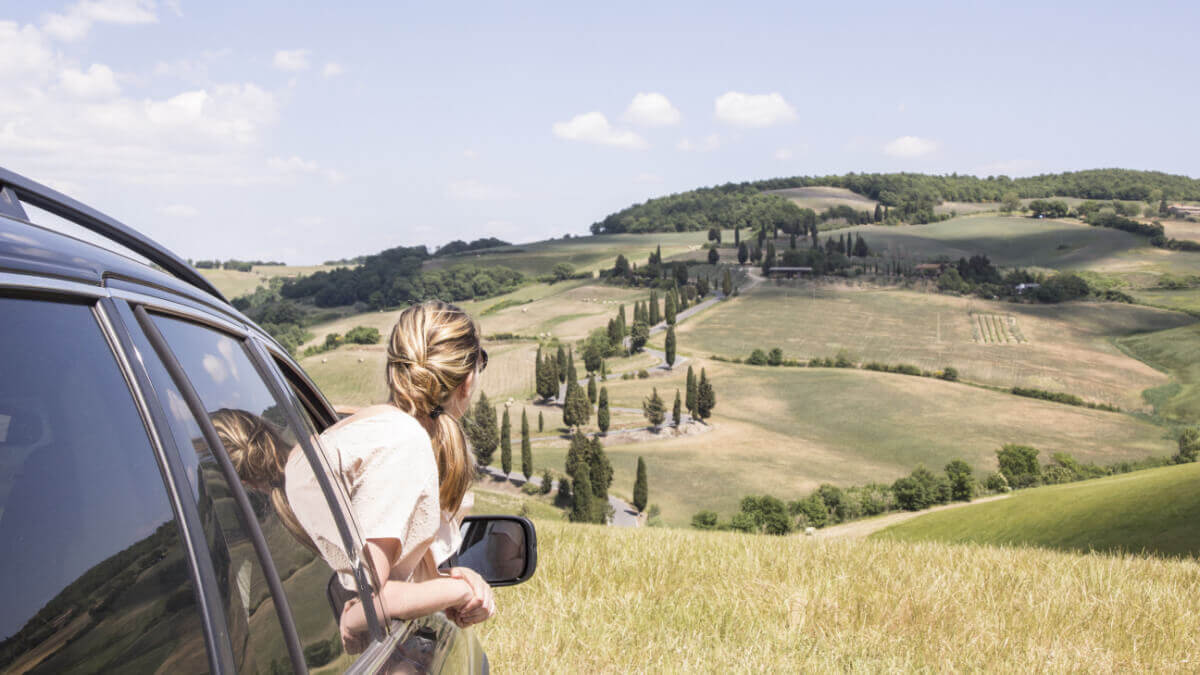
Jumping into your motor from the UK and driving to Italy sounds like a dream. Everybody loves the sense of freedom and excitement of a good road-trip, but planning it…? Not so much.
Don’t worry, we’re here to help with that! Our guide covers the 9 best places to visit on your road trip in Italy.
Wherever the road takes you, Wise’s international card and account are a convenient and low-cost way to spend money in the local currency. With over 150+ countries and 40+ currencies supported (including Italy and euros), it’s your new, global best friend.
Learn more about the Wise card 💳
Italy is an amazing choice for a road-trip not only for some of the most scenic views and locations in Europe, but because of the incredible versatility you’ll find here.
While the local driving customs might be a bit different than what you are used to, it’s important to first and foremost feel confident in your driving skills. Italian drivers change lanes quickly, the pace is fast and there will often be scooters zooming in between the cars.
PS. If you’ve already fallen in love with the country, check out our guides to buying a property in Italy and moving to Italy.
Generally speaking the best travel months are considered to be April, May, June, September and October.
In spring you’ll find a good balance between the tourist flow and the weather. April usually has both rain and sunshine, for May and June you can expect mostly clear skies.
Autumn brings with it the colour display of the changing season, and the end of the tourist season. As locals return to their daily rhythms and opening times shorten in many places, you may enjoy the slower pace and more authentic feel of the local life.
| 📚 Read more: Best debit card to use abroad: Top 6 UK picks |
|---|
Now, let’s jump right in with our list of the must-see places to visit during your road trip in Italy.
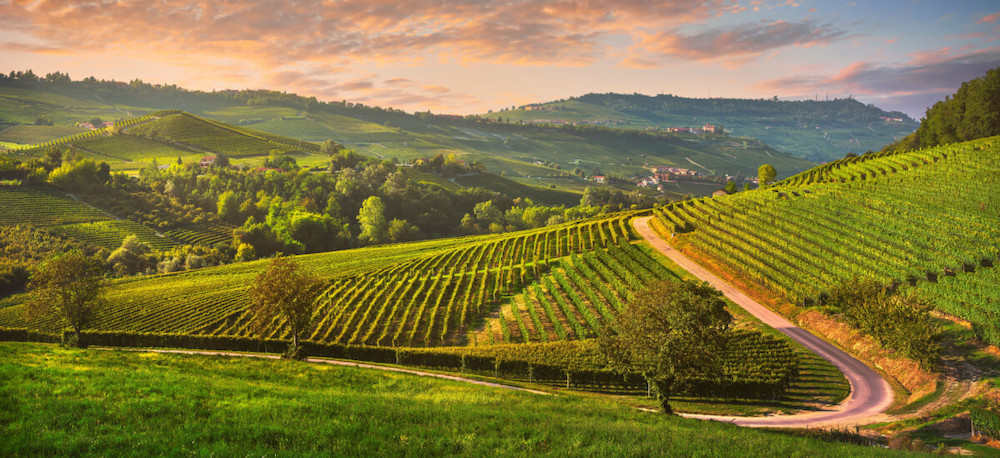
If you’re looking for a hidden gem with fewer tourists, Piedmont is a great choice.
In southern Piedmont you can take the opportunity to explore wine towns of La Morra, Grinzane Cavour, Barolo, and Monforte d’Alba. Here you can enjoy the best Barolo wines in the world while surrounded by beautiful scenery.
The capital of Piedmont, Turin, is rich in art and culture. Don’t miss the Cathedral that houses the Holy Shroud. Or, if you prefer a museum, there’s many to choose from.
Towards the north you’ll find the beautiful lakes Orta and Maggiore. In the centre of lake Maggiore you’ll find the Borromean Islands, favoured by Ernest Hemingway himself.
You can plan a day trip to one of the many destinations in Piedmont or to really explore the area, extend your road trip up to a week.
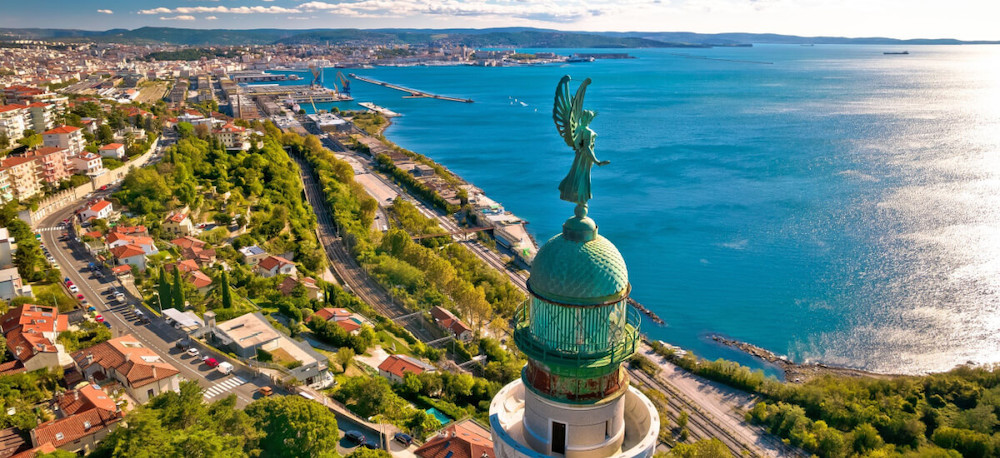
In the North-Eastern side of Italy you’ll find the multifaceted port town of Trieste. A blend of different cultures and rich heritage, this town is different from what you will see in the more typically known southern cities. Schnitzel, anyone? The Austrian influence is present in the cuisine as well as architecture.
Trieste is also known as the coffee capital of Italy, so if you’re a coffee lover, visiting at least one of the many many cafes of Trieste is a must.
Outside of Trieste be sure to visit the lighthouse of Faro della Vittoria and the beautiful castle of Castello Miramare that is situated on the waterfront. You can also visit the Caravella beach which is close to Sistiana.
You can easily explore Trieste in a day or two. Another good option is to combine it with a trip to the Dolomites, which we’ll cover next.
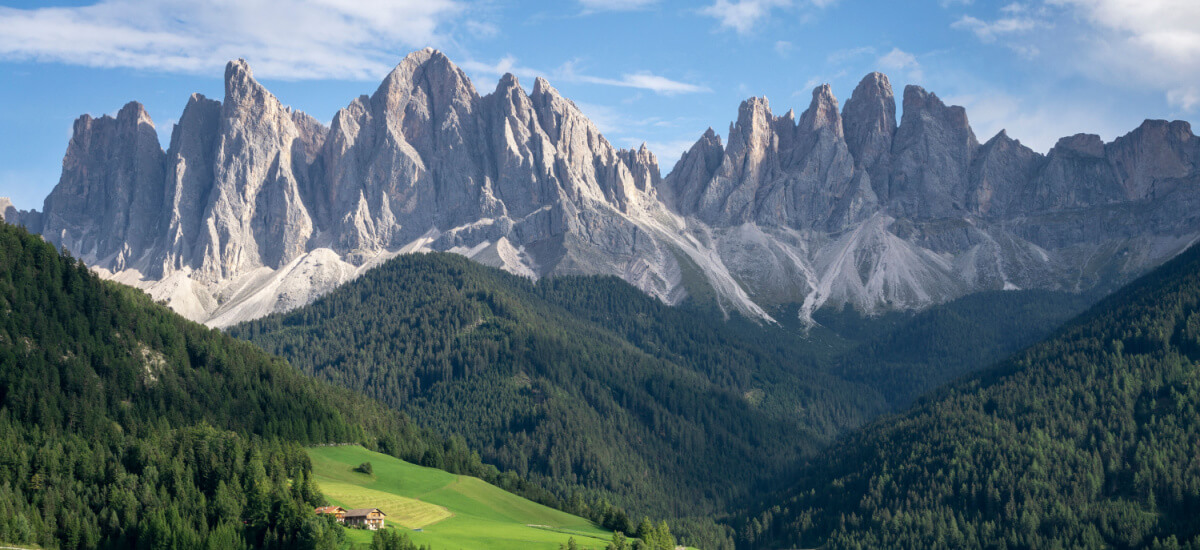
The Great Dolomites Road is a truly spectacular road that takes you through one of the most awe-inspiring landscapes in Italy – the UNESCO listed Dolomites, known as the Pale Mountains. Within these beautiful mountains you’ll find plenty of dramatic views: rugged cliffs, mirror lakes, lush green valleys as well as charming towns.
The entire Great Dolomites Road is only fully open (from the town of Bolzano to Cortina d’Ampezzo) from early June to mid-September. Remember to keep an eye on the weather in the beginning and end of the season, as weather in the mountains changes rapidly during shoulder seasons. Even during the summer make sure to pack warm clothes.
You could drive through the whole road that is 110 km long in as little as 3-4 hours, but to really take in the views – as well as get some stunning photos – you might want to almost double that.
If you have more time to spend, you can extend your exploration of the smaller roads and siding areas up to several days.
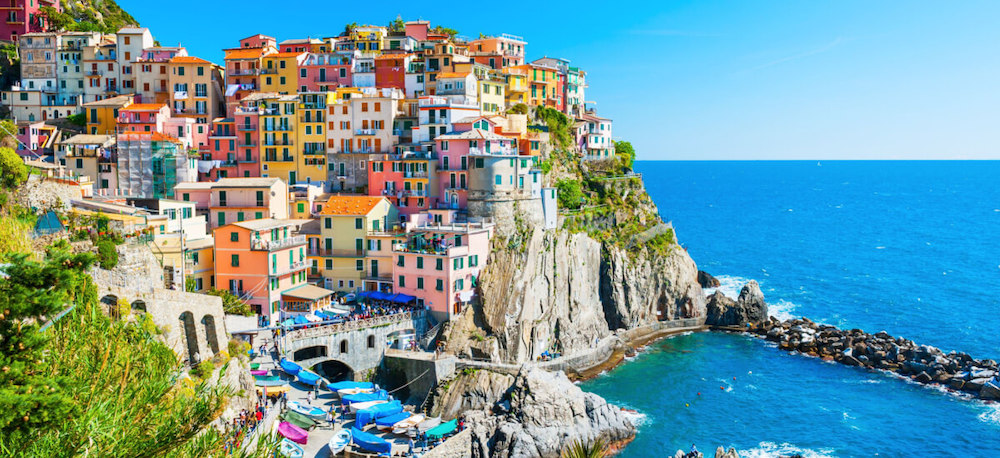
One of the most scenic areas in Italy as well as a UNESCO World Heritage Site, Cinque Terre is a colourful grouping of five picturesque villages – Monterosso al Mare, Vernazza, Corniglia, Manarola, and Riomaggiore – that are nestled along the Italian Riviera coastline.
There will be plenty of vistas to take your breath away here, but do note that the roads can be narrow, steep and winding. You may also not be able to enter the villages by car, but may instead leave them in designated parking areas. Corniglia and Vernazza are the two more challenging villages to reach by car, so when visiting them from a nearby village, you could opt for a train instead.
All of the villages can be visited in one day, but 2-3 days will allow for a more immersive experience and to make the most of local seafood, viticulture, hiking trails and beaches.

Known for its beautiful rolling hills, cypress trees, vineyards and olive groves, Tuscany paints a picture of serenity that's hard to resist. Add to that the culinary delights and allure of cities like Florence, Siena, and Pisa, and you've got a destination that delivers a perfect blend of relaxation and exploration.
Florence, the birthplace of the Renaissance, provides you with the perfect opportunity to marvel at iconic masterpieces in the Uffizi Gallery and embrace the architectural grandeur of the Florence Cathedral.
The Via Chiantigiana, winding through the Chianti hills between Florence and Siena, is a must for breathtaking views. Make sure to pass through the Chianti Classico wine region, stopping at vineyards to savour world-class wines.
Siena is a city full of medieval charm. Be sure to stop by Piazza del Campo, the iconic shell-shaped city square – a perfect place to soak up the history, architecture and atmosphere of Siena.
And of course, we can’t leave out Pisa, one of the most famous landmarks and places in the world to visit. Strike a classic tourist pose or challenge yourself to come up with a new one as you marvel at the Leaning Tower.
If you’re going for the full Tuscany experience, take a week to explore the area. For a shorter trip, 2-3 days are enough.
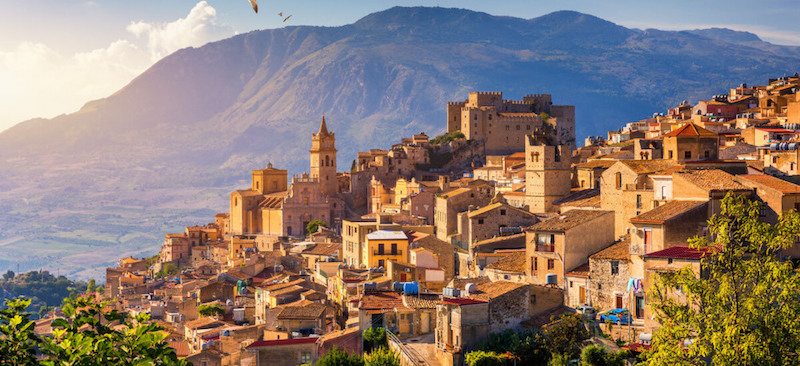
A road trip is the perfect way to explore everything the island of Sicily has to offer from Cefalù’s picturesque beaches to Mount Etna and the ancient history of Agrigento.
Palermo, the capital of Sicily, delights visitors with amazing street food. Make sure to stop by the markets of Capo, Ballarò and Borgo Vecchio. History and culture lovers will find plenty of museums, galleries and the exciting Capuchin Catacombs.
Visit the charming towns of Cefalù and Taormina for picturesque beaches with golden sand. Catania and Syracuse are other noteworthy towns to visit and if you have time, explore the Val di Noto area.
The iconic Mount Etna towers 3,000 metres over the island and as one of the most active volcanoes in the world, you’ll often see it spewing large plumes of smoke. To explore Mount Etna you can go on a hike passing sleeping craters, lava flows and hot springs or for less excitement, take a cable car or a narrow-gauge railway ride instead.
Located near the city of Agrigento, the Valley of the Temples is a UNESCO World Heritage Site. Here you can explore the beautiful Doric temples, built by the ancient Greeks in 500 BC.
For the full Sicily experience, we recommend a week. To visit just a couple of items on the list, a day is enough.
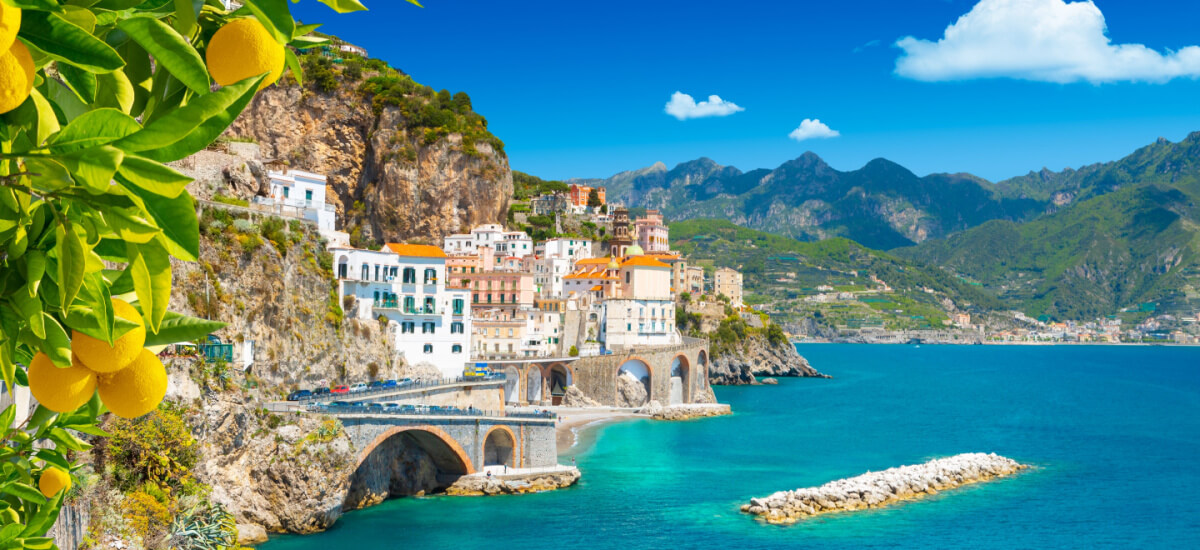
A breathtaking 30-mile coastal road in southern Italy is known as the Amalfi Drive or Amalfi Coast Road. Meandering along the enchanting Amalfi Coast, it serves up stunning vistas of the Mediterranean Sea, striking cliffs and quaint villages such as Amalfi and Positano. Expect narrow lanes, hairpin turns, and steep cliffs and heaviest traffic from July to August.
Pompeii And Herculaneum are exciting to explore, with incredibly large areas of the ancient ruins preserved. Consider booking tickets in advance as well as avoiding the busiest times of day.
Visit towns like Sorrento, Positano and Salerno. In Salerno don’t miss the castle on the hilltop - Castello di Arechi, where you’ll get some of the best views.
Amalfi is one of the bigger towns to visit and Ravello offers the best photo opportunities.
To visit all of the mentioned towns, take 2-3 days, or just pick 1-2 destinations and complete the Amalfi Drive in a day.
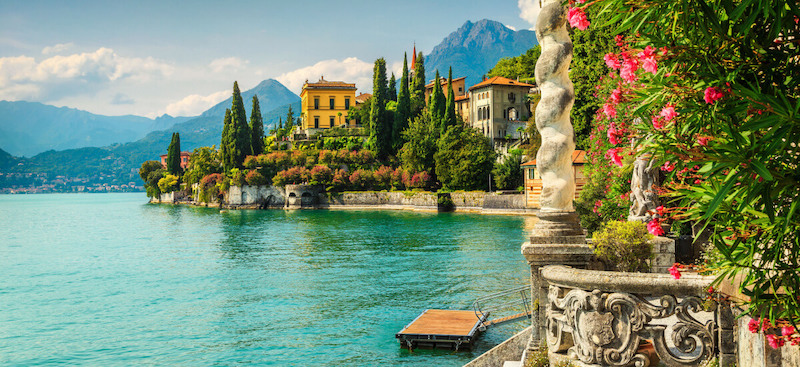
A long time favourite destination of celebrities and other prominent figures, Lake Como is famous for its natural beauty, charming lakeside villages and historic villas. Surrounded by Alpine peaks, it is undoubtedly one of the most picturesque lakes of Northern Italy.
Of course, you’ll want to explore the historic town of Como itself and the nearby Villa Olmo.
In the lakeside village of Bellagio visit the grounds of Villa Melzi d’Eril. In Bellagio you can take a ferry to Tremezzo, to visit a 17th-century villa and surrounding gardens at Villa Carlotta.
For culture and history lovers, Bergamot is a treat. This dynamic, bustling city has a beautiful mediaeval heart, another UNESCO World Heritage Site.
Plan 1-2 days for your Lake Como road trip.
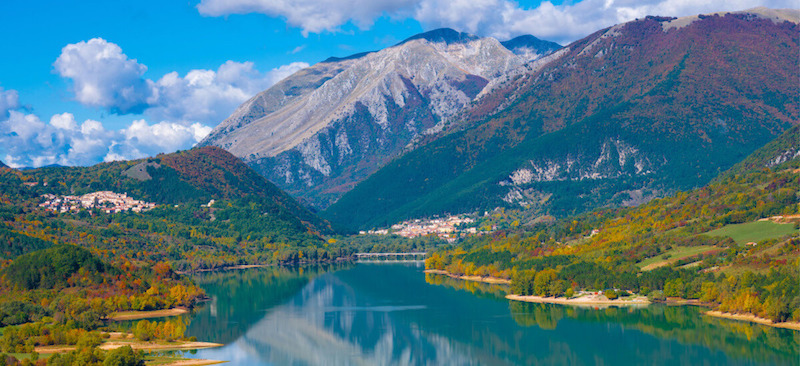
Abruzzo is the perfect destination if you’re looking for a scenic, calm road trip with mountain views. Expect mostly empty roads and plenty of open space. If you’re not a fan of hairpin turns, the meandering roads here might be more to your taste. Abruzzo is also the only mountain range in Italy that is close to the sea.
The biggest draws are the Majela Massif and Gran Sasso peaks, located about 60 miles apart. Between the two there are plenty of small towns to visit, making it a perfect road trip.
Perfect for nature lovers, you can visit places like the Calanchi di Atri Nature Reserve, Monti della Laga National Park, lake Scanno and the Stiffe caves. You might also want to visit the abbey of San Giovanni in Venere and the hermitage of San Bartolomeo in Legio.
Depending how much time you have, you can go for a shorter trip between the largest peaks in just a day or expand your time to several days to explore everything Abruzzo has to offer.
| 📚 Read more: UK travel credit cards you can use abroad |
|---|
If you’re planning to drive to Italy in your own car, there are a couple of options. You can take the LeShuttle to France through the Eurotunnel, or opt for the cheaper option and take a ferry instead.
Make sure to compare prices between different options and book ahead of time to get the best deal.
If you’re renting a car in Italy, you can either take a plane, subway, train or bus there. Again, make sure to compare prices and the location of the arrival airport or station to find the best fit for your budget and exact destination.
The short answer is, yes, you can drive in Italy as a Brit. Your UK driver’s licence is accepted in Italy and you’ll also need to have your passport with you as your proof of identity.¹
UK vehicles are required to have a V5 log book, proof of vehicle insurance and MOT certificate. Your vehicle also needs to have a UK sticker displayed on the back.
Your car also needs to have a reflective jacket and warning triangle at all times, as well as headlamp beam deflectors.
| 📚 Read more: Can you use your phone abroad? Everything you need to know |
|---|
Want to spend like a local in 150+ countries, including Italy? The Wise card, from the money services provider Wise, might be just the thing you’re looking for.
Open a Wise account online and you can order your own contactless Wise card or get it as a virtual card. You can use the card to pay for any bookings in advance and use it on the spot just like a local to pay by card or to withdraw cash from the ATM.
Whenever you spend in a different currency, the card automatically converts the currency at the mid-market exchange rate – with no margin added on top and no foreign transaction fees. There’s only a small, transparent currency conversion fee, or it’s free if you already have the currency in your Wise account.
The Wise account also lets you make international payments for low fees and mid-market exchange rates, making it easy and convenient to pay for accommodation or car rental in advance. It’s not a bank account but offers many similar features.
Sources used for this article:
Sources last checked on date: 16-Feb-2024
*Please see terms of use and product availability for your region or visit Wise fees and pricing for the most up to date pricing and fee information.
This publication is provided for general information purposes and does not constitute legal, tax or other professional advice from Wise Payments Limited or its subsidiaries and its affiliates, and it is not intended as a substitute for obtaining advice from a financial advisor or any other professional.
We make no representations, warranties or guarantees, whether expressed or implied, that the content in the publication is accurate, complete or up to date.
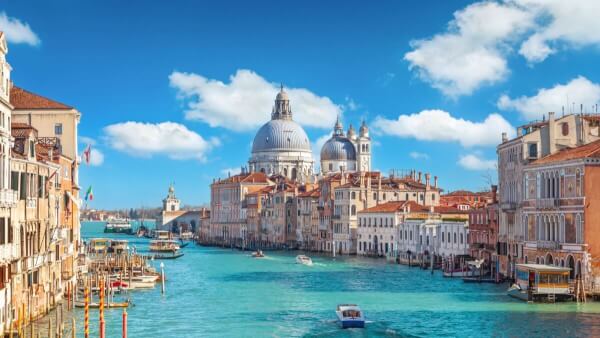
Read our guide on the best travel card for Italy, including card comparisons and travel tips.
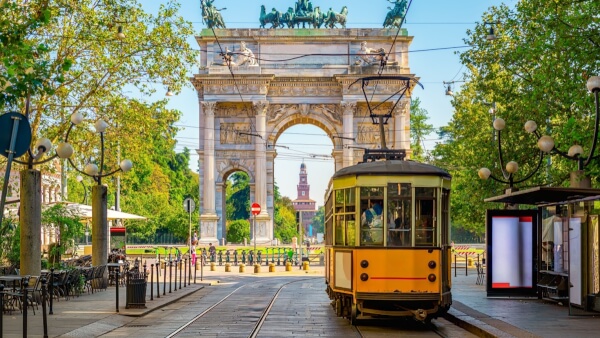
What’s the best way to buy train tickets in Italy? A handy guide including step-by-step instructions and FAQs.

Should you pay with cash or card in Italy? A handy guide including cash etiquette, Italian ATMs and using your UK card.

Italy is just a flight away. Learn how to shop tax-free at Gucci and many other stores, and obtain a VAT refund in cities like Rome, Milan, and Florence.

Essential read for UK citizens driving in Italy with a full breakdown of requirements, driving rules and documentation – be prepared for your next trip.

How much cash can I take out of Italy? Read this handy guide for everything you need to know about taking cash in and out of Italy.